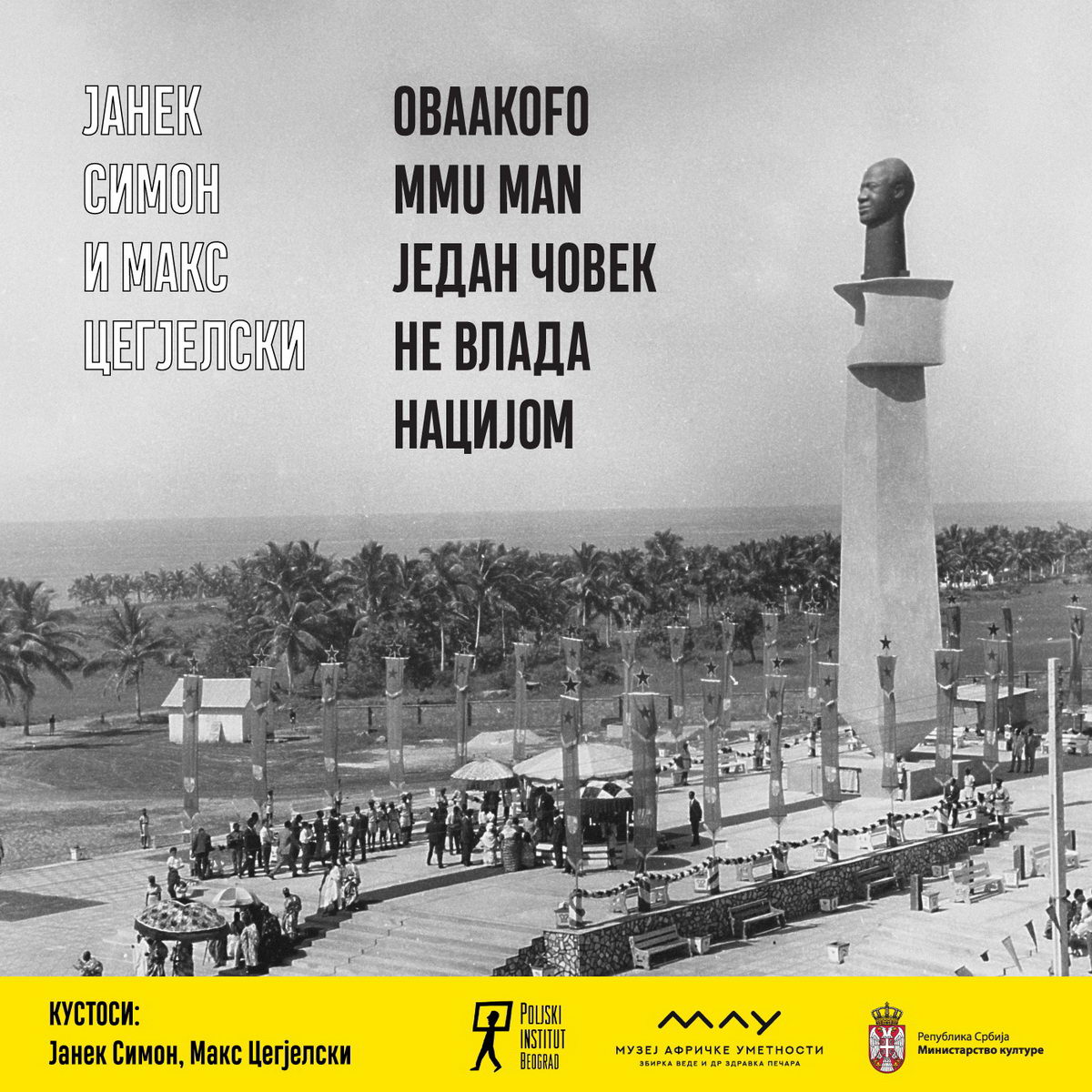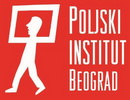ONE MAN DOES NOT RULE A NATION
25 September – 19 November 2025
Curators:
Janek Simon and Max Cegielski
About the exhibition:
*Exhibition organized by the Polish Institute in Belgrade and the Museum of African Art
The installation One Man Does Not Rule a Nation, by Polish artists and curators Janek Simon and Max Cegielski, explores the intertwined histories of Ghana, Poland, and—more broadly—the countries of the Non-Aligned Movement during the 1960s.
Inspired by the shifting meanings of kente cloth patterns and a fallen visual symbol—the Sword Monument, designed by Polish artist Alina Szlesińska for Kwame Nkrumah—this almost forgotten episode of international solidarity offers insight into the era of Pan-Africanism and the anticolonial struggle. By combining archival material, 3D reconstruction, and newly filmed footage, the installation not only revives memories of Afro-optimism, but also raises questions about more just forms of global cooperation today.
Previously presented at the Ljubljana Biennial of Graphic Arts, the Survival Kit Festival in Riga, and Trafostacja Sztuki in Szczecin, and shown in parallel with the Museum of African Art at the Red Clay Studio in Ghana, the Belgrade exhibition re-examines decentralized forms of North–South solidarity and the historical task of fostering intercontinental dialogue.
On Thursday, September 25, the exhibition was opened by McDonnell Asante Osafo, Chargé d’Affaires of the Embassy of the Republic of Ghana in Belgrade, and Elizabeth Asafo-Adjei, curator at the National Museum of Ghana.
In their remarks, the authors of the exhibition, Janek Simon and Max Cegielski, emphasized: “This multimedia exhibition reminds us of the monument to Kwame Nkrumah, the first president of independent Ghana, designed in 1965 by the Polish artist Alina Szlesińska, which, unfortunately, was demolished shortly after the military coup. Almost six decades later, we reflect on the period between 1955 and 1965—a time of hope, both in African countries and in the states of Eastern Europe. That is why this exhibition goes beyond Ghana and Poland: through archival research in the Museum and in former Yugoslavia, deeper connections with this topic have been uncovered. It is an era that continues to inspire us.”
Elizabeth Asafo-Adjei, curator at the National Museum of Ghana, stated at the opening: “Kwame Nkrumah was a visionary who opened the doors for artists from all over the world to come to Ghana. Alina Szlesińska, on the other hand, was also a visionary, and he recognized that. She engaged with different branches of science and art, speaking about solar panels at a time when they did not yet exist. People are connected by ideas—and while working on the monument, she was supported by the local community. Her work is still respected today. That collaboration between countries went beyond the framework of politics.”
McDonnell Asante Osafo, Chargé d’Affaires of the Embassy of the Republic of Ghana in Belgrade, officially opened the exhibition and highlighted the importance of art as a bridge between cultures: “This exhibition comes only a few days after we marked the 116th anniversary of the birth of Kwame Nkrumah, the founder of our country. Nkrumah understood that political freedom, without economic and intellectual sovereignty, remains an illusion. His vision and ideals continue to inspire the struggle for a more just and peaceful world,” Osafo said. He added that art in diplomacy has the power to connect nations, ease political divisions, and foster long-term cooperation through creative projects and cultural exchange. “Art is not a side stage of diplomacy, but a space where trust is built and the future is shaped,” Osafo concluded.
Alongside the exhibition, a rich accompanying program has been organized: the international seminar Mining the “Heart of Darkness” held on September 26 and 27, with speakers from Poland, Ghana, Belgium, and the Czech Republic. The seminar addressed the legacy of Conrad’s novella Heart of Darkness, examined from historical, museological, postcolonial, and contemporary ecocritical perspectives.
During the run of the exhibition, creative workshops for children entitled Kente Cloth – A Treasury of Colors and Meanings will take place every Sunday at 11 a.m. The workshops will offer young participants the opportunity to discover the symbolism of colors and patterns in these iconic Ghanaian textiles and to create their own works inspired by African traditions. Registration is required – please send an email to This email address is being protected from spambots. You need JavaScript enabled to view it..






